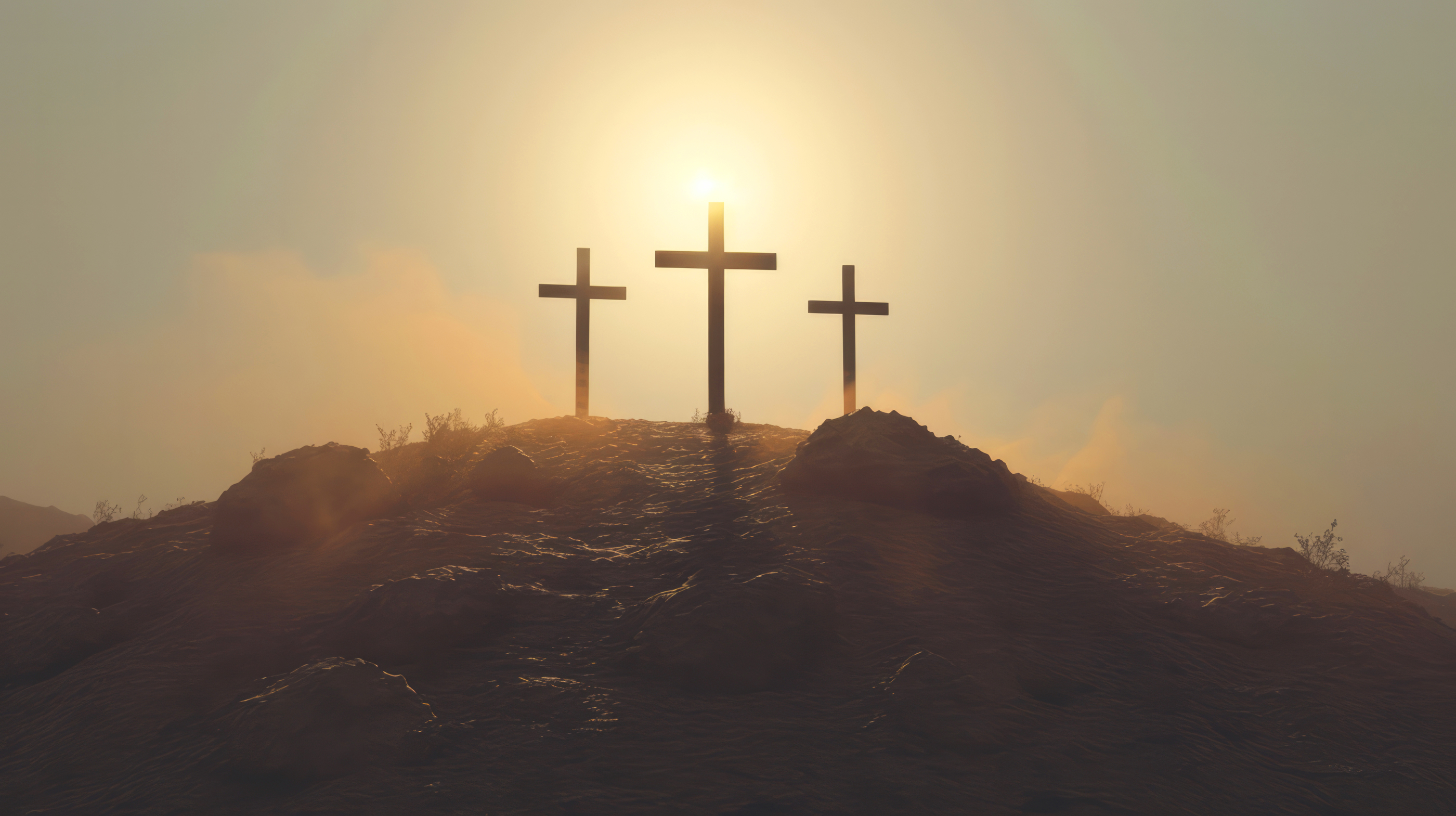The central thrust of Stephen Prothero’s provocative book, God is Not One: The Eight Rival Religions That Run the World, is that the major religions of the world are manifestly not all saying the same thing in different ways.
As Prothero expertly demonstrates, there are incommensurate differences that separate religious belief systems that should chasten those who would attempt a naive harmonization. Claiming that Buddhists, Muslims and Christians (or whoever) all adhere to the same religious worldview and set of practices is not only deeply reductionistic, but is in fact as dishonest and blatantly fallacious as saying that Democrats and Republicans actually embody the same political perspective, or that Capitalists and Marxists are pursuing an identical economic agenda.
Such ideologically disparate visions as these cannot be swept under the rug and reduced to generic labels like “politics” or “economics.” In exactly the same way, the category of “religion” is wrongly employed if the intention is to caricature what is distinctive in each religion’s particular vision of the world.
Yet Prothero opens his study by acknowledging that there is, in fact, a single isolated point of common ground that connects every religious tradition:
“What the world’s religions share is not so much a finish line as a starting point. And where they begin is with this simple observation: something is wrong with the world...Religious folk worldwide agree that something has gone awry. They part company, however, when it comes to stating just what has gone wrong, and they diverge sharply when they move from diagnosing the human problem to prescribing how to solve it.” 1To co-opt the imagery of C. S. Lewis, Prothero is contending that the sole conviction shared by all religions is that there is winter in Narnia. In Lewis’ famous stories for children, that it is winter in the once regal land of Narnia metaphorically communicates that things are “not the way they are supposed to be.” However, if our experience of the world is indeed characterized by the presence of “winter, but never Christmas,” there is absolutely no consensus on two profoundly vital questions that arise from this fundamental observation. First, why is there winter? And second, what needs to happen for the life-giving thaw of spring to return? In other words, what is the origin of what is wrong with the world, and what is the solution to it? It is self-evident that one’s answers to these latter two questions must invariably cohere in their deep logic. Diagnosis and cure are mutually interpreting.

Much modern Christianity gives very clear-cut responses to these two questions. What is the problem? Individual human beings sin and therefore die. What is the solution? The death and resurrection of Jesus, which bring forgiveness of my sins and make possible eternal life after death. I contend that these answers are not so much wrong as they are reductionistic and incomplete as they stand. They are inevitably slanted towards a merely individualistic interpretation of Christianity, in which God’s good, global project of creation is of little or no concern, and all that matters is the private “soul” of each individual being salvaged from the cosmic wreck. This understanding of the “gospel” not only fails to render a satisfying, comprehensive analysis of our experience of what ails the world — the problem is much bigger than the immorality of individuals, even if it is not less than that — but also cannot do justice to the richness and complexity of the story we are given in the Scriptures. {tweetme}My goal is to explore our two controlling questions — Why is there winter? Whence will spring come again? — in a posture of listening before the full panorama of the biblical drama, with a little guidance from C. S. Lewis thrown in.{/tweetme}
C. S. Lewis’ Narrative Vision of the Gospel
In The Lion, the Witch and the Wardrobe, the four Pevensie children eventually happen together upon the magical world of Narnia and discover that the bitter, harsh cold they experience as they walk through the snow has tormented the realm for as long as any of the talking animals can remember. If one asks a reader familiar with the Narnia stories why it is that this winter has come upon the world, two answers seem to come readily to mind. First, there is winter in Narnia because the White Witch reigns over the land in her evil, malicious power. She is the source of winter’s cold and winter’s dark:
“‘She is a perfectly terrible person,’ said Lucy. ‘She calls herself the Queen of Narnia though she has no right to be queen at all....the Animals—at least all the good ones—simply hate her. And she can turn people into stone and do all kinds of horrible things. And she has made a magic so that it is always winter in Narnia—always winter, but it never gets to Christmas. And she drives about on a sledge, drawn by reindeer, with her wand in her hand and a crown on her head.’” 2On any reading, the White Witch is a symbol for Satan in Lewis’ allegory. Following New Testament cues, which represent the evil one as the “ruler” of this fallen world,3 Lewis traces the present experience of darkness and death in Narnia to this illegitimate usurper who currently holds sway as Queen over the kingdom. Yet this answer is ultimately unsatisfactory. The White Witch’s relationship to “winter” is only derivative. She is not the main problem, nor the source of what ails Narnia. Her terrible role is a real one, but she is finally seen to be a side player as the drama unfolds. Her unjust seizure of royal authority in Narnia was contingent upon something else going wrong first.
Another reasonable answer is that the absence of Aslan from Narnia is the driving cause behind the winter. Aslan, clearly the God/Jesus figure in the Narnian adventures, has not been seen in the land for generations. Or, at least this was true before the human children chanced upon the magic wardrobe:
“‘But now that Aslan is on the move—’ ‘Oh yes! Tell us about Aslan!’ said several voices at once; for once again that strange feeling—like the first signs of spring, like good news, had come over them. ‘Who is Aslan?’ asked Susan. ‘Aslan?’ said Mr. Beaver. ‘Why, don’t you know? He’s the King. He’s the Lord of the whole wood, but not often here, you understand. Never in my time or my father’s time. But the word has reached us that he has come back. He is in Narnia at this moment. He’ll settle the White Queen all right...He’ll put all to rights, as it says in an old rhyme in these parts:Here Aslan’s return to Narnia after a long season of hiddenness, absence and silence is understood as the solution to winter. Winter reigns in Narnia only insofar as Aslan is not there, ruling as the rightful King. This is surely correct, yet it would be a mistake to trace the source of winter to Aslan.
Wrong will be right, when Aslan comes in sight,
At the sound of his roar, sorrows will be no more,
When he bares his teeth, winter meets its death,
And when he shakes his mane, we shall have spring again.4
What, then, does Lewis portray as the underlying cause of the dismal long winter? An important clue is sprinkled throughout the Narnia stories, as Lewis frequently has characters give voice to the true identity of the children: they are the sons of Adam and the daughters of Eve. Of course, this is a Christian way of saying “human,” but that is not precisely what Lewis means. For Lewis, as well as for the Bible, being human is interpreted as a royal vocation. Nonetheless, it is a failed vocation in Narnia’s long, sordid history of winter. As Aslan provocatively says to the children, “You come of the Lord Adam and the Lady Eve, and that’s both honor enough to lift up the head of the poorest beggar, and shame enough to bow the shoulders of the greatest emperor on earth.”5
As the story progresses, the royal identity of the four human children occupies an increasingly prominent role for Lewis. It turns out, contrary to most readers’ expectations, that human beings hold the key both to winter’s origin and winter’s demise. Four thrones sit empty and abandoned in Cair Paravel, the capital city in Narnia. These thrones were meant to be occupied by human beings, and Aslan’s original intention in creating Narnia was to rule the kingdom through faithful human kings and queens who were set over the land to bring flourishing to Narnia. Yet in forsaking their royal vocation, two events were indelibly and tragically set in motion. First, Aslan could no longer rule Narnia in the absence of his chosen kings and queens, and was himself forced to abandon the land. Second, the White Witch was enabled to usurp authority from human beings, and henceforth has reigned as the unchallenged ruler of Narnia. Instead of flourishing for the inhabitants of the land (as was to be expected if trustworthy, good human rulers were in place), this Queen’s selfish, dehumanizing rule has led to “winter” for all who dwell in Narnia. Thus, both the “problem” (the onset of winter) and the “solution” (the healing thaw of spring) are finally bound up with the royal vocation of human beings. Winter is only possible under the White Witch because human beings forsook their royal role, and winter will be no more when Aslan returns to rule through faithful human kings and queens. Indeed, the “timing” of Aslan’s return is essential for Lewis—the lion can only embark upon his trek back to wintry Narnia once the Pevensie children have themselves entered Narnia. Immediately after the poem celebrating Aslan’s return sounds forth from Mr. Beaver (above), another prophecy follows hard on its heels:
‘‘[O]nce [Aslan is] with us [said Mr. Beaver], then we can begin doing things. Not that we don’t need you too. For that’s another of the old rhymes:Indeed, what the White Witch fears above all else is the return of these human children to once more take up their royal mission in Narnia:
When Adam’s flesh and Adam’s bone
Sits at Cair Paravel in throne,
The evil time will be over and done.
So things must be drawing near their end now he’s come and you’re come’...‘I don’t understand, Mr. Beaver,’ said Peter. ‘I mean isn’t the White Witch herself human?’ ‘She’d like us to believe it,’ said Mr. Beaver, ‘and it’s on that that she bases her claim to be Queen. But she’s no Daughter of Eve...No, no, there isn’t a drop of real human blood in the Witch.’” 6
“‘And that’s why [said Mr. Beaver], the Witch is always on the lookout for any humans in Narnia. She’s been watching for you this many a year, and if she knew there were four of you she’d be more dangerous still.’ ‘What’s that to do with it?’ asked Peter. ‘Because of another prophecy,’ said Mr. Beaver. ‘Down at Cair Paravel—that’s the castle on the seacoast down at the mouth of this river which ought to be the capital of the whole country if all was as it should be—down at Cair Paravel there are four thrones and it’s a saying in Narnia time out of mind that when two Sons of Adams and two Daughters of Eve sit on those four thrones, then it will be the end not only of the White Witch’s reign but of her life...Why, all she wants is to get all four of you (she’s thinking all the time of those four thrones at Cair Paravel).’” 7For C. S. Lewis, the Christian answer to our two questions — Why winter? Whence then spring? — is finally and permanently bound up with humanity’s royal role in creation. And in this persuasion, Lewis was being far more faithful to the Christian story than most watered-down presentations of the gospel today can claim to be.
Creation and Priestly Kingship
To survey the drama of Scripture is daunting, but given the disproportionately enormous significance of the creation story relative to the short length of its account in the Bible, the opening chapters of Genesis merit sustained attention. As Stephen Dempster rightly notes, everything that follows in the Hebrew Scriptures about Israel assumes the cosmic framework of Genesis 1-11:
“The larger literary context of the Tanakh [the Hebrew Bible as a whole] has significant hermeneutical implications. For example, it begins with Genesis rather than with Exodus, signifying that Israel’s national history is subordinated to that of world history. Hermeneutically, this means that the birth of Israel as a nation and its raison d’etre are set within God’s larger purposes for the world and for creation.” 8Several details in Genesis 1 point to the centrality of kingship in the biblical creation story. First, the six days of creation follow a clear parallel structure. On days one, two and three, God creates “realms” (day and night, then sky and sea, and then land), but they remain as yet uninhabited. On days four, five and six God creates the “rulers” of these barren realms (sun and moon, birds and fish, animals).9 Second, human beings are created not just as the capstone of day six, but as the pinnacle of God’s creative activity as a whole. Created in God’s “image” and “likeness,” humanity as male and female is given the task of ruling over the “realm” of creation (“dominion” in Gen 1:26, 28 and “subdue” in 1:28). Human beings are, so to speak, the kings and queens of the created order under God. Indeed, while the meaning of being fashioned in the “image” of God has long captivated the imaginations of readers, with countless proposals being set forth for what this image entails (Reason? Physical resemblance to God? Endowed with an immortal soul? Relationality?), the obvious and explicit answer in the immediate context is too often overlooked. Reflecting God’s “image” is defined through the function or task of exercising dominion and rule over God’s creation. Levenson articulates what has slowly become the scholarly consensus on the issue:
“The link between the creation of humanity ‘in the image of God’ in Genesis 1 and their status as royalty can be clearly seen in ancient Near Eastern inscriptions in which it is the king who is described as the ‘image’ of the deity...The creation of humanity ‘in the image of God’ [is] a statement of the sovereignty of the human race over the rest of creation. The entire race collectively stands vis-à-vis God in the same relationship of chosenness and protection that characterizes the god-king relationship in the more ancient civilizations of the Near East. ‘The image of God’ is his chosen viceroy.” 10Further guidance can be found in another Scripture, a portion of which happens to be emblazoned in the stone of Harvard’s own Emerson Hall. Psalm 8 is a poetic meditation on and celebration of the creation story in Genesis 1, and again we see that kingship is of utmost importance. In between a literary inclusio in which the psalmist exults in the majestic name of God manifested in his good creation (8:1, 8:9), the writer turns to look for God’s “glory” that transcends creation (8:1b). Where is this “glory” to be seen in the created order itself? The psalmist begins by drawing a severe contrast between the vast, epic scope of the universe (8:3) and the empirically unimpressive smallness of human beings within God’s majestic creation (8:4). The psalmist asks, what are human beings, that you [God] would even notice us in the midst of this gigantic, breathtaking cosmos? Even more, what is the “son of man” (another way of referring generically to humanity) that you [God] should care for us, let alone notice us? At first glance, human beings seem hopelessly insignificant in the story of creation.
“Yet” (Ps 8:5). In contrast to this initial impression, the truth of the matter is shockingly counter-intuitive. Of everything God has created, only human beings have been singled out for “glory and honor.” Here is where God’s “glory” is preeminently to be seen within creation. What constitutes this “glory and honor” that humanity is created to reflect and embody? The psalmist tantalizingly suggests that human beings have been “crowned” with this privilege (8:5), hinting at overtones of royalty. 8:6, undeniably echoing back to Genesis 1, makes explicit what such “glory and honor” consists of for human beings. God has given humanity “dominion” over the works of his hands. He has “put all things under his feet.” Once more, in the “realm” of creation as a whole, human beings are the exalted “rulers” established by the Creator King. As His deputies or vice-regents, God delegates to His image-bearers alone the responsibility for exercising His gracious reign over the world. According to Genesis 1 and Psalm 8, God rules the world He has created. But He does so only and ever through the royal race of human beings—whom Lewis affectionately calls the sons of Adam and the daughters of Eve.11 Here we find a good summary of humanity’s “job description” in the world: human beings are meant to be lord over all in God’s good creation. And as Dempster notes, “The rest of the canon assumes the royal overtones of Genesis 1, indicating the unique authority assigned to the primal couple, and thus to all humanity.” 12
Two final points must be made about the opening salvo of the biblical drama, replete as it is with the imagery of humanity’s delegated kingship in creation. First, Genesis 2 qualifies the royal “dominion” given to human beings in Genesis 1 in such a way as to rule out any potentially negative notes of “domination.” If human beings are “kings” in Genesis 1, Genesis 2 emphasizes that they are so only as “priests.” As Gordon Wenham has pointed out, the call to “work and serve” (2:15) the garden employs two Hebrew words that only appear together again in the Scriptures as a job description of the Levitical priests in the Tabernacle/Temple (cf. Num 3:7-8, 8:26, 18:5-6). Indeed, as has been conclusively demonstrated many times, the Garden of Eden itself is described in Genesis 2 as a primordial temple.13 “Kings” and “priests” both share a role in the biblical story as mediating figures who function as representatives between God and the world. Yet where kings rule in acting on behalf of God before the world, priests bless in acting on behalf of the world before God. Aaron’s “blessing” of Israel in Numbers 6:22-27 embodies the fundamental stance all human beings are intended to have towards the world as its divinely-appointed rulers: “The Lord bless you and keep you; the Lord make his face to shine upon you and be gracious to you; the Lord lift up his countenance and give you peace.” As the context demonstrates, this human blessing is treated as God’s blessing of the people (6:27), insofar as the priest represents God as a mediator. Thus, as the Creator’s priest-kings, human beings were intended to rule the world for its flourishing, seeking to bless and not curse, to serve its good and not to dominate it for their own self-serving ends. When Jesus proclaimed to his power-hungry disciples that the true definition of “dominion” or “lordship” for those who wish to be “rulers” (Mk 10:42, using the same two verbs found in the Septuagint of Gen. 1:26-28 for “subdue” and “rule”) is not greatness but service, not being “first” but rather becoming the “last” (10:43-44)—something seen supremely in his kingly death on behalf of the world (10:45)—he wasn’t being original. Jesus was drawing out the meaning that was always embedded within the story of Genesis 1-2 from the very beginning.
Second, the “problem” that arises in Genesis 3 must be seen in light of humanity’s royal vocation in Genesis 1-2. Why is there now winter in God’s previously “very good” creation? What went wrong? In light of the creation story, the “fall” is not simply or even mainly about private individuals incurring guilt before a holy God. This aspect is included, of course, but the primary emphasis is that God’s image-bearers, called to be priest-kings ruling over creation for its good, failed to exercise God’s authority over the serpent. In listening to the crafty serpent rather than to God, human beings abandoned their charge to rule, and instead gave authority to an impostor who is absolutely not committed to the well being of those he rules over. The irony and tragedy of this dark reversal could not be more obvious. The kings and queens of creation have become slaves.14 And the chapters that immediately follow in Genesis make clear that sin (represented by Cain’s murder of Abel) and death (for example, each in the long chain of Adam’s descends is pointedly said to have “died”) now reign over the world precisely in the stead of unfaithful humanity. The vacuum must be filled; if human beings fail to guard the kingdom the throne will not be left empty. In the list of curses given by God in judgment in Genesis 3:14-19, it is clear that the fracturing of creation itself is the result of humanity’s failure to rule wisely and justly as kings and queens; the land itself will now bear thorns and thistles. Just as a faithless, foolish and selfish ruler not only dooms himself, but also all those “under” him in his realm, so creation now suffers the bitterness of winter as a result of God’s image-bearers turning away from what they were called to be.15
Rethinking ‘Jesus is Lord Over All’
Whence will spring come? In a word, the kingdom of God serves in the Scriptures as an apt description of the ideal state of affairs in Genesis 1—namely, the “kingdom” is God ruling the world through His royal image-bearers and vice-regents for its flourishing. As McCartney writes, “The ‘coming’ of the kingdom of God that is expected in the OT involves a reinstatement of humanity to the proper position of vicegerent, exercising the reign of God on earth.”16 And the restoration of the dynamic described in Genesis 1 is the ultimate goal behind every “movement” of the biblical story, from Abraham to Israel, from David to Jesus. Psalm 110 speaks of a “Lord” that is both a king who rules (110:1-3) and a priest who uses this authority to bless and intercede on behalf of his people (110:4). This Lord is Jesus, the true and faithful human being through whom God can finally exercise His intended dominion à la Genesis 1.17
The central confession of the early church was that the Jesus who was crucified and then raised from the dead has now become Lord over all, bringing salvation to all who turn to him in repentance and the obedience of faith.18 This fact, in itself, is not controversial:
“Despite great differences of thought and phrase and treatment there is one essential Christology in the New Testament. Perhaps it can be best summarized in the primitive Christian confession of faith — ‘Jesus is Lord.’” 19What is more difficult to grasp can be put in the form of several questions. First, what did the expression “Jesus is Lord over all” mean when the early Christians proclaimed it? What is the background to this claim?20 Second, why is it so essential to the gospel? The lordship of Jesus is arguably the one “fact” that always appears in every summary statement of the gospel in the NT, even more than Jesus’ death and resurrection. Third, in what sense is “Jesus is Lord” good news for the world? How can a claim to universal rule and authority over the nations be seen as cause for joy in a broken world?
Answering the first question correctly holds the key here. For a long time, Christians have been conditioned to functionally equate “Jesus is Lord over all” with the statement, “Jesus is really God.”21 Indeed, the examples of this line of reasoning could be multiplied almost endlessly.22 Yet several pieces of evidence tell strongly against this interpretation. First, the unambiguous and consistent perspective of the NT is that Jesus became “Lord” over all through his death23 and his resurrection.24 For NT writers, these events constituted Jesus’ enthronement at God’s right hand. The crucified and risen one is now King of the world. Indeed, Jesus received the “name” that is above every name (Lord) after his death and resurrection (Phil 2:9).25 But if “Jesus is Lord” is just another way of saying “Jesus is God,” the idea that Jesus became “Lord” and received the divine title “God” is deeply problematic! Second, the most common “explanation” of the statement “Jesus is Lord” in the NT is through recourse to OT passages like Psalm 8 — passages about the preeminent human vocation, not about the incarnation or divinity of the Messiah. Third, Jesus’ lordship contains an implicit promise for his followers in the NT. Jesus now reigns over all things as Lord — but one day, Christians will “reign” with him over the world.26 If “lordship” is another way of referring to divinity, this is a thoroughly inappropriate idea.
Instead, I suggest that the confession “Jesus is Lord over all” is, for those who have their ears tuned to the rhythm of the drama of Scripture, another way of saying “Jesus is the true human being through whom God is now ruling the world for its blessing.”27
Now the last two questions come into clear focus. Why is the lordship of Jesus so central to the gospel? Why is it good news? Simply put, this confession contains the meaning of Jesus’ death and resurrection. Good Friday and Easter represent the ultimate act of human “rule” over the enemies that oppose God and His people (sin and death), leading to the “blessing” of the world. The cross is what being truly human looks like in a fallen, broken world. That is, to be truly human is to use authority for the sake of others as a priest-king. If humanity’s job description via creation was “Lord over all” (Gen 1:26-28, Ps 8:5-6), such words, when attributed to Jesus, must be heard with reference to his humanity, not his divinity.28 Jesus is indeed God (John 1:1-18), but to look for that message here is to get the right doctrine from the wrong text. Likewise, to exclude the daring claim “Jesus is Lord” from our message to the world is to empty the cross and empty tomb of their redemptive significance for the world. The one who died for us and rose for us did not undergo a private religious experience for his own sake; rather, he is the very human to whom God has entrusted all authority in heaven and earth. The kingdom has come. God’s people are saved. The world is in the process of being set right. Winter has lost its grip on creation, and the slow thaw of spring has already been set in motion. And not just for isolated, pious individuals. Creation itself will soon be healed on a cosmic scale when humanity is once more crowned with “glory”, sharing in the glory of the crucified and risen Jesus.29 As goes the king, so goes the kingdom. As the ruler fares, so fares the realm over which he or she has authority. Just as humanity’s fall led to the fracturing of creation, so also the restoration of humanity to its former glory will carry in its wings the healing of the nations and the liberation of creation itself.30
I write this essay on the night before the United States presidential election, unaware of what the outcome will be. For many, “good news” would be the election of one’s favored candidate, while disaster would be the wrong man’s assuming rule over the nation. The instinct is right — it matters who is in charge over the world. Christianity is an inherently, irreducibly political worldview. It is not enough for individuals to be moral. Winter still reigns in spite of our moral effort; evil, brokenness, and oppression go all the way down, and are intractable in spite of the best intentions of individuals. But we intuitively know that if the “king” set in power over us is righteous, just, and committed to the flourishing of the kingdom, lasting hope and peace will come in a way that is otherwise impossible to attain. This dynamic is the reason billions of dollars have been poured into this election and the reason that so much passion, hope, and even hatred has been stirred up by it. The tragedy in this misdirected obsession is in thinking that the Jesus who gave himself for the life of the world on the cross, and who was vindicated by God and established as Lord over all three days later, is not the true focus of all such hope, and that the well-being of creation might be achieved by another.
To a world that still lives under the dark wintry reign of sin and death, there is no good news to be had other than in the confession that the crucified, risen Jesus is now Lord over all. In the present moment, it is true, we do not yet see everything in subjection under the feet of God’s image-bearers. Things are not the way they are supposed to be. But we do see him who, for a little while, was made lower than the angels as a son of Adam, namely Jesus. And we see him already crowned with glory and honor at God’s right hand, reigning over the world as Lord because of the suffering in his death, so that by the grace of God he might taste death for everyone.31 As Lewis reminds us through Trufflehunter: “This is the true King of Narnia we’ve got here: a true King, coming back to true Narnia. And we beasts remember, even if Dwarfs forget, that Narnia was never right except when a son of Adam was king.”32
References
1] Stephen Prothero, God Is Not One: The Eight Rival Religions That Run the World, p. 11.
[2] The Lion, the Witch and the Wardrobe, pp. 87-88. See also p. 81, p. 93.
[3] Matt. 4:8-10, 12:26, Mark 3:26, Luke 10:17-18, John 12:31, 14:30, 16:11, Acts 26:18, Rom. 16:20, 1 Cor. 5:5 (cf. 1 Tim. 1:20), 2 Cor. 4:3-4, Eph. 2:2, 1 John 5:18-19, Rev. 2:13, 12:9.
[4] The Lion, the Witch and the Wardrobe, pp. 99-100.
[5] Prince Caspian, p.284.
[6] The Lion, the Witch and the Wardrobe, pp. 99-100.
[7] The Lion, the Witch and the Wardrobe, pp. 100-101.
[8] Stephen G. Dempster, Dominion and Dynasty: A Theology of the Hebrew Bible, p. 23. Cf. Jon D. Levenson, Creation and the Persistence of Evil: The Jewish Drama of Divine Omnipotence, p. 5: “The placement of Genesis 1 first in the Bible makes a theological statement that must not be evaded.”
[9] Psalm 136:7-8 confirms this take on the matter, often called the “Framework View” among rival interpretations of Genesis 1.
[10] Jon D. Levenson, Creation and the Persistence of Evil: The Jewish Drama of Divine Omnipotence, p. 114. See now especially J. Richard Middelton, The Liberating Image: The Imago Dei in Genesis 1.
[11] “The language [of Psalm 8] is that used elsewhere for God’s own mastery over the world, and the assumption is that he has appointed humanity to be his viceroy, the highest ranking commoner, as it were, ruling with the authority of the king. The human race is YHWH’s plenipotentiary, his stand-in.” (Jon D. Levenson, Creation and the Persistence of Evil: The Jewish Drama of Divine Omnipotence, pp. 113-14).
[12] Stephen G. Dempster, Dominion and Dynasty: A Theology of the Hebrew Bible, p. 60.
[13] See Gordon J. Wenham, “Sanctuary Symbolism in the Garden of Eden Story,” Proceedings of the World Congress of Jewish Studies 9 (1986): 19-25, who compiles a list of clearly intentional parallels between the descriptions of Eden and the later Tabernacle/Temple sanctuaries. See also Greg Beale’s magisterial work, The Temple and the Church’s Mission: A Biblical Theology of the Dwelling Place of God.
[14] The books of Romans tracks this descent into slavery. As Paul implicitly comments on this story in Romans 1:21-25, the original sin of humanity was to foolishly trade in their crowns of “glory” in order to “bow down and serve” the creature they were meant to rule over. They now “lack the glory” that God once gave to them (Rom. 3:23; cf. Heb. 2:5-8). Rom. 5:12-21 is filled with descriptions of sin and death “reigning” over the world since humanity’s fall.
[15] “[It is] a central scriptural teaching…that wherever anything wrong exists in the world, anything we experience as antinormative, evil, distorted, or sick, there we meet the perversion of God’s good creation. It is one of the unique and distinctive features of the Bible’s teaching on the human situation that all evil and perversity in the world is ultimately the result of humanity’s fall, of its refusal to live according to the good ordinances of God’s creation. Human disobedience and guilt lie in the last analysis at the root of all the troubles on earth.” (Albert M. Wolters, Creation Regained: Biblical Basics for a Reformational Worldview, p. 46.)
[16] Dan G. McCartney, “Ecce Homo: The Coming of the Kingdom as the Restoration of Human Viceregency,” Westminster Theological Journal 56 (1994), p. 17. Cf. “Another way of describing this emphasis [in Genesis 1] on human dominion and dynasty would be by the simple expression ‘the kingdom of God.’ The earth is created for human dominion and rule, which reflects the divine rule…The realization of the kingdom of God is linked to the future of the human race.” (Stephen G. Dempster, Dominion and Dynasty: A Theology of the Hebrew Bible, pp. 62, 69)
[17] The word “rule” in 110:2 is an allusion to Gen. 1:26-28
[18] For just a few examples, see Acts 2:22-36, 10:36-43, 13:26-39, Rom. 1:1-5, 10:9-13, 1 Cor. 15:1-5, 24-28, Phil. 2:6-11, Heb. 2:5-18
[19] A. M. Hunter, The Unity of the New Testament, p. 43
[20] “[What is hard] to conceive of as ‘given’ from the beginningis that which justifies and gives rise to an interpretation of his lordship as exercises over the whole of creation…There are, of course, plenty of theories about how a cosmic Christology was reached.” (C. F. D. Moule, The Origin of Christology, p. 43)
[21] Oscar Cullmann, The Christology of the New Testament, p. 235. Oscar Cullmann expressly argues that “the question of the deity of Christ in the New Testament should be asked in terms of the Kyrios [Lord] title and its implications for the absolute lordship of Christ over the whole world…The New Testament unquestionably presupposes the deity of Christ, but it does so in connection with faith in the lordship he exercises since his exaltation.”
[22] For example, see Wayne Grudem, Systematic Theology, pp. 544-45; A. M. Hunter, The Unity of the New Testament, pp. 34-35; Donald Macleod, Jesus is Lord: Christology Yesterday and Today, pp. 33, 52, etc.
[23] See Matt. 27:27-44, Mark 15:1-32, Luke 23:35-43, John 19:5, 14-15.
[24] See Matt 28:17-20, Acts 2:32-36, 13:32-33, Rom 1:3-4, 14:9, Phil 2:9-11. “In passages where the theology of Jesus’ lordship becomes explicit, it is clear that the resurrection was understood as the decisive event in his becoming Lord.” (James D. G. Dunn, The Theology of Paul the Apostle, p. 245.)
[25] See also Eph 1:20-22, Heb 1:3-4.
[26] See Matt 16:18-19, 19:28, 25:34, Mk 10:35-45, Lk 12:32, 22:29-30, Rom 5:17, 1 Cor 4:8, 6:2-3, 2 Tim 2:12, Heb 2:5-13, Rev 2:26-27, 3:21, 5:10, 20:4-6, 22:5.
[27] Compare the profound irony of Pilate’s dual statements about the crucified Jesus in John 19:5, 14. As so often in the Scriptures, he speaks far better than he knows. Here is the true priest-king—and thus, the true human being.
[28] “It is the risen and exalted Christ who fulfills and completes the divine plan for humankind (humankind’s responsibility to rule over the rest of creation)…The lordship of Christ was understood also as the fulfillment of God’s purpose in creating Adam/humankind. Jesus as Lord is also the last Adam.” (James D. G. Dunn, The Theology of Paul the Apostle, pp. 241, 248)
[29] See Rom. 8:17-21.
[30] “This return of humanity to its primal calling (ruling the world on God’s behalf) means a full-scale restoration of every aspect of the cosmos gone wrong.” (J. R. Daniel Kirk, Jesus Have I Loved, but Paul? A Narrative Approach to the Problem of Pauline Christianity, p. 41.)
[31] I make explicit reference here to Heb. 2:8-9.
[32] Prince Caspian, p. 236.
This article has also appeared in the Harvard Ichthus and appears here with permission of the author.
 Nick Nowalk is a Christian Union teaching fellow.
Nick Nowalk is a Christian Union teaching fellow.Nick is from the New Jersey / New York area. He became a Christian during his freshman year at High Point University through the influence of a student-led Cru ministry. He earned a BA in English Writing with a minor in Religion/Philosophy, and then moved to the Twin Cities to attend Bethel Seminary. While earning an MDiv, he also served as a youth pastor and as staff at Minnesota Teen Challenge.
He next spent two years as a pastoral apprentice at Bethlehem Baptist Church in Minneapolis under John Piper in The Bethlehem Institute, and concurrently he taught a number of theology and Bible classes at the undergraduate and graduate level. Nick studied at Pittsburgh Theological Seminary prior to joining Christian Union in 2008. He has written several curriculums for Christian Union's University Ministries, including Sex & Spirituality, Romans and Hebrews. He is currently working on a book on the story-shaped spirituality of the Psalms, and in his free time loves all things NYC, jogging in Central Park, and reading great novels over allegedly good coffee.












